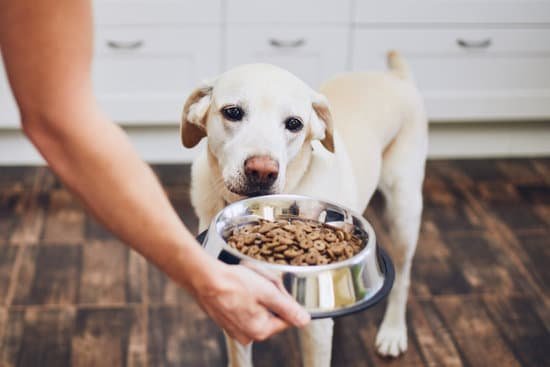Introduction
Crate training your dog may be one of the most beneficial things you can do for both their health and behavior. Crate training provides a safe environment that will reduce anxiety, help with potty training, and decrease the risk of destructive behaviors like chewing furniture or tearing up curtains. It also offers an area for your pet to relax in times of stress and gives them a feeling of security when outside or away from home. Through crate training, owners will have the peace-of-mind knowing that their furry companion is safe and secure while they’re away. Additionally, crate training can break bad habits like barking and begging for food at the dinner table by providing a place of comfort without reinforcement. With regular use and clear instruction from owners, your pup will learn that their crate is a place to rest peacefully instead of any negative connotations associated with being inside it. This positive reinforcement helps build trust between pets and owners, creating strong bonds between loved ones as day-to-day routines become more manageable.
Preparing for Crate Training
When beginning crate training, it is important to create a comfortable environment for your dog. This includes providing them with the necessary items that will make them feel safe and secure in their crate. Dogs should have enough room to stand, sit and turn around with ease. Line the floor of their crate with a blanket or towel to provide cushioning, and add some chew toys, snack treats, and/or special blankets or stuffed animals that they can snuggle up with. You may even want to consider leaving the television or radio on at a low volume while your dog is in the crate, so they do not feel lonely. In addition, whenever possible place their crate near where you are often working or hanging out so they can see you nearby—this will help get rid of any anxiety that could arise from being away from family members for long periods of time. Lastly, be sure to eliminate any distractions (i.e., outside noise) that may pull your pup’s attention away from learning how to better behave in the future.
Introducing the Crate
Crate training your dog can provide numerous benefits for both you and your pooch. Before introducing them to the crate, it’s important to make sure that their first experience is a positive one. Start by placing treats inside the crate and letting your pup explore it at their own pace. Encourage them to go in with friendly words and lots of praise. When they do, reward them with a treat so they can connect this positive experience with going in their crate. Make sure that the door of the crate remains open so they can come and go as they please, removing any feelings of confinement or anxiety. As your pup becomes more comfortable with their environment, you can slowly start closing the door for short periods of time before progressing onto longer durations. Be sure not to leave your dog in the crate for too long though as this will lead to feelings of distress and unnecessary stress on your pet’s end. With regular practice, what was once an unfamiliar piece of furniture will eventually become a safe space filled with trust and comfort!
Establishing Boundaries
Crate training is an invaluable part of Absolute Dog’s puppy training program that can make all the difference in creating a happy, safe environment for your pup. Crate training teaches your dog the importance of boundaries and establishes trust between you and your dog.
One great step of crate training is teaching your pup the stay and go command. This simple command helps establish boundaries and authority early on in their growth. To begin teaching this command it’s best to pick a calm moment with your pup, when they are not too stressed or overwhelmed. Once you’re ready, place them in the crate with a fun chew toy or special treat to focus their attention and motivate them. Place yourself directly outside the crate but remain close to it so that they become aware of your presence even if they cannot see you visually through the enclosure. Then say the word “Stay” firmly and wait for about 30 seconds before rising to open the door. When you open calmly tell them to “Go” as soon as they get out, then reward them with verbal praises, treats or pets for leaving when asked! If you consistently reinforce this action even when distractions arise, soon enough they will realize that when given these commands, immediate obedience is expected from them.
By consistently reinforcing this boundary-establishing command, puppies will more quickly adapt to learning other basic tricks such as sit and down while also understanding when their own boundaries have been crossed by asserting themselves inappropriately through barking or jumping up on people without being invited
Enhancing Crate Training
For those looking to extend their dog’s crate training, it is important to understand a few basic concepts about reinforcing behaviors. Positive reinforcement is one of the cornerstones of successful animal training and can be used in many different ways with crate training. Positive reinforcement involves presenting rewards and praise when an intended behavior is completed or, depending on the situation, simply presented in advance as incentive for good performance.
This positive reinforcement should be frequent and appropriate to the task at hand. Rewarding frequently encourages dogs to repeat the desired behaviour and eases anxiety when they are placed in the crate. For example, a tasty treat readily available right after entering the crate can help make it a more enjoyable experience for your dog. Even verbal rewards such as saying “good boy” or petting them on the head can be excellent forms of positive reinforcement.
It is also important for owners to remain consistent with their training methods and schedule. Utilizing a set routine will provide familiar structure that dogs respond well too and provide familiarity with their owner’s expectations from them. Furthermore, planning regular play sessions within (or near) the crate helps establish it as an area for fun activities associated only with positive experiences. During these play times you may find success unscheduling commands like ‘go back in your crate’ then providing treats upon entering so that your dog associates enjoyable experiences with being inside his/her own space.
Overcoming Challenges
Crate training can be a challenge for both dogs and owners alike. Many dogs struggle with the confinement of being in the crate while owners have difficulty understanding how to properly use it. To help overcome potential difficulties, it is important to understand why crate training is so beneficial and how to approach your dog’s concerns.
Crate training can provide a safe space for your dog in their home or when traveling and help establish good habits for potty training and overall obedience. This type of training teaches dogs to be respectful of their space, keeps them from destroying your belongings, reduces stress during car rides and vet visits, and can even help prevent separation anxiety in some cases.
When introducing crate training to your pup, it is important to gradually introduce them to the crate by lining it with cozy blankets, placing treats inside and having a few familiar toys present. This will make the cage feel like less of an obstacle for them as they become more accustomed with it. It may also be helpful initially to leave the door open until they are comfortable enough to stay in there with it closed; making sure not to push or scold them if they attempt to escape at first. Lastly, providing ample exercise throughout the day helps reduce their eagerness while inside while ensuring they get out all their energy before bed time!
On the Go
Absolute Dogs’ crate training is an excellent addition to any pup’s routine, especially when traveling. By teaching your pup to become comfortable with a carrier or crate and form good experiences about it, you can ensure stress-free car rides. This will not only benefit you but help keep your pup calm during those longer trips on the road.
Nothing can derail a fun trip like having an anxious pup in tow! To help ensure that your furry friend is comfortable and safe while traveling, Absolute Dogs recommends starting small. Take short trips in the car that only last 10-15 minutes while introducing your pup to their crate or carrier. During these shorter trips, make sure to reward them with treats or verbal praise to create positive associations with car rides and the crate itself. As they relax into being confined in the crate during these rides, start taking longer ones so they can get some much-needed rest during the journey. Eventually, you’ll be able to rest easy in knowing that your pup is happy and content in their mobile home while on the go!
Reflection
Crate training provides a great many benefits for both human and pet. It helps to ensure the safety of your pet, particularly if you have small children or cats in the house. It can help to set boundaries with what is acceptable behavior and keeps your puppy from chewing on the furniture and other items in your home. Crate training also provides a feeling of security for dogs, allowing them time away to rest and have some peace. Additionally, it prevents them from engaging in behaviors such as barking or destructive behaviors when bored or left alone for extended periods of time. In general, it can help promote potty-training as puppies will learn not to go to the bathroom inside their own space, which reinforces good hygiene habits. Finally, crate training can provide routine and structure for both pets and owners since feeding times and potty breaks become regular habit formations. Ultimately, crate training is not only beneficial but essential in raising a healthy and properly trained puppy.
Conclusion
Crate training is an invaluable tool when it comes to toilet training your dog. It can also be used for a variety of other reasons, not least, to provide your pet with a secure and safe place for sleeping or when travelling. By providing an enclosed space where they feel safe, it can help your pup to avoid becoming anxious in unfamiliar situations, allowing them greater opportunities to explore their environment without fear. Finally, with correct and consistent use crate training offers significant benefits when you want to further train behaviors like Recall, Sit and Stay etc; giving you the control needed to shape any desired behavior. In summary, crate training has incredible potential for use in any household from puppies through to adult dogs; making it an essential element of canine development.

Welcome to the blog! I am a professional dog trainer and have been working with dogs for many years. In this blog, I will be discussing various topics related to dog training, including tips, tricks, and advice. I hope you find this information helpful and informative. Thanks for reading!





